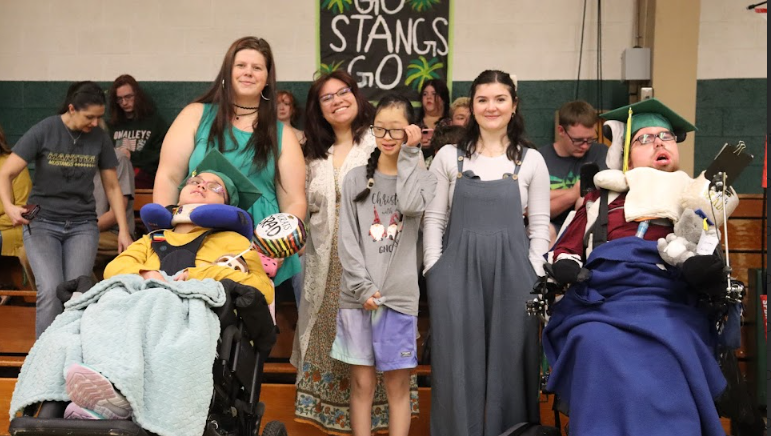In November 2022, the release of ChatGPT took the world by storm. AI was quickly becoming a resource for not only students and teachers, but for anyone in the world. It seemed as though the possibilities of AI were endless. With sites being created and updated every day, there was no shortage of options. Some students used AI to help them brainstorm or organize ideas, others used it for a good laugh every once in a while. However, a change in ChatGPT and federal policies would cut student’s explorations short.
ChatGPT cannot regulate its user’s age’s without error, so the task falls to administrators and federal lawmakers.
Cat Olimb, Manitou Springs School District’s Director of Technology, spoke about AI sites and their bans. “We have to follow something called FERPA,” Olimb said. “You have to follow certain privacy policies.”
According to OpenAI, “ChatGPT is not meant for children under 13, and we require that children ages 13 to 18 obtain parental consent before using ChatGPT.” Schools that use ChatGPT have permission forms for students under 18.
Because MSSD14 cannot unblock certain applications on a select amount of student devices, a district-wide ban was put on the use of AI on all student devices.
Due to the information stored within school devices, the use of AI may pose a serious privacy threat. “That’s how they survive,” Olimb said. “They’re selling their user data to whoever wants to buy it.”
Some MSHS teachers prefer that AI is not used within their classrooms. English teacher Pierce Gillard avoids AI in his teaching. “I think that it would be limiting the way in which I engage with the information I’m trying to teach,” Gillard said.
However, other teachers may disagree. History teacher Sam Duff believes that the use of AI within classrooms should be conditional. “As long as you are using AI in order to enhance your ability as a teacher and using it with academic integrity, then I think that should be more than permitted,” Duff said.
Regardless of their personal beliefs, teachers feel that communication is most important when it comes to AI in classrooms. “Having a conversation about why it’s important to do work on your own is important,” Duff said. “You can use AI as long as you’re using it to deepen your understanding of a particular topic, but using it as your own work is unacceptable.”
In addition, other teachers have specific guidelines they hold themselves to when using AI in their classrooms. “I’m transparent about it,” social studies teacher Toby Partridge said. “I let my students know when I am using it and for what I did use it for, and I try to demonstrate how to properly use it so that they can use it responsibly as well, so my standards are 100% transparency and honesty.”
On the basis of safety and privacy concerns within an educational setting, students are not allowed to use AI in most situations.
What it all comes down to is the personal preference of each student, teacher and citizen. “There are great use cases for using in the classroom, and I would encourage teachers to explore it and to at the very least learn about it and what its capabilities are,” Partridge said, “and probably more importantly, what its limitations are.”
















































Rowan McCardie • Mar 7, 2024 at 2:39 pm
I think that A.I. usage in classes should be about utility be it a teacher using it to grade and help detect incorrect usage of A.I or to detect plagiarism. However, when it comes to student usage it should be under teacher discretion if an assignment includes it and if not they really have no business really using A.I. to assist in school work as most examples of students using it, just use it to be lazy on assignments and work.